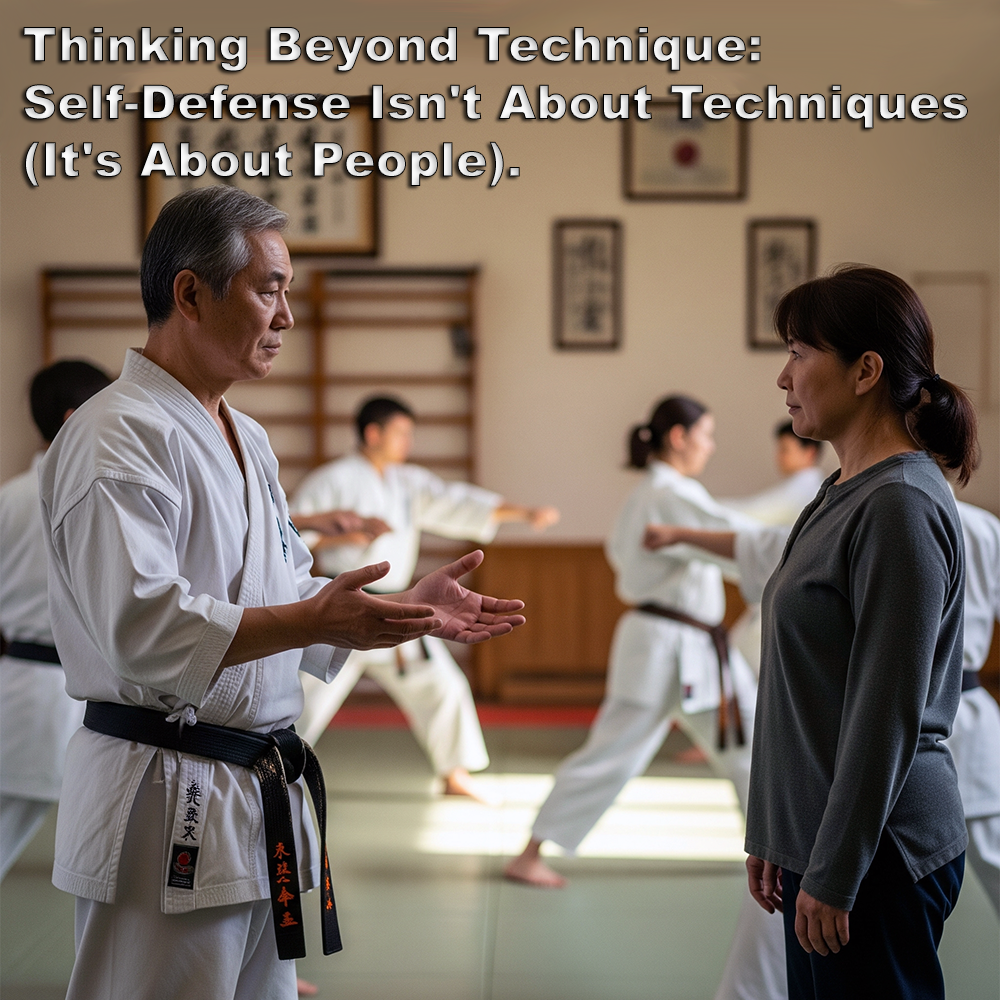
Thinking Beyond Technique: Self-Defense Isn’t About Techniques (It’s About People).
Posted by ADAM CARTER on JUN 12, 2025

Thinking Beyond Technique: Self-Defense Isn’t About Techniques (It’s About People).
(Approx 2 minute 50 second read)
I recently wrote about helping a new mother with no experience begin learning self-defense. I wrote about mindset, awareness, and small, practical habits that could fit into a very real, very full life.
But as expected, some of the replies were about techniques. What they would teach. Which moves they’d include in a “women’s self-defense” class. As if the scenario I described – a tired, busy woman with a six-month-old baby and no training – could be solved with a list of techniques.
It’s not that techniques are useless. It’s that they’re not the starting point. Strikes, kicks, even locks – they feel like answers. But they’re not for everyone.
Instructors often forget that the people seeking help aren’t blank slates. Many have full lives – work, children, fatigue, and often fear. In many cases, they come without any intention of stepping into a dojo three nights a week. What they’re asking for isn’t a syllabus. It’s safety.
So when someone reaches out – wanting to feel safer – it’s our responsibility not to overwhelm her with techniques – it’s our job to listen. To understand her world. To offer something that actually fits inside it.
Real self-defense is not about showing off what you can do. It’s about helping someone else feel less vulnerable in their world.
And if you’re running a women’s self-defense course for people with zero experience – what exactly are they going to take away from it in a couple of hours, or even a weekend? What are you really teaching them? They need something that is going to last, not that will fade away as soon as they get home.
Physical techniques take time to learn. They take repetition, pressure, confidence – and perhaps most of all, the intention to strike another human being. That’s not a given. Not every woman (or man) wants to hit. Not everyone can. And trying to force that mindset on someone who hasn’t chosen it yet is not empowerment – it’s pressure.
Too many of these classes have participants leave with a handful of flashy techniques, but no context. You talk about ‘zanshin’ – awareness, but you don’t practice it.
You tell them they’re stronger than they think – but that alone won’t keep them safe.
Instructors defend what they teach by saying, “Well, it works for me.” But self-defense isn’t about you – it’s about the person in front of you. What works for you, might be completely unrealistic for someone just trying to feel safe walking home with a stroller.
And how exactly do you expect her to fight? Leave her baby in the stroller while she tries to palm-heel her way out of a purse snatch or a car-jacking?
What might help is a better question. Not “What techniques should you teach?” But: “What does this person need right now?” – “What can you give her that will actually help?”
While the original conversation was about a young mother, there are plenty of men, too, who don’t want to fight, who won’t hit back, who simply want to feel safe moving through their day.
This is not the martial arts I am discussing here. Not everyone wants to be a warrior. Some just want to walk to their car without fear. And if you can’t help with that, then maybe you need to rethink what it is you’re really offering.
The martial arts and self-protection are different. They overlap, but teaching a fight response first and ignoring the important fundamentals of preparedness is not the place to start.
And this is why not everyone should be claiming they teach self-defense. Because palm heel strikes, kicks, and arm locks that fall apart under pressure aren’t the answer for many people.
If your teaching assumes the student, after a weekend class, will suddenly become aggressive and fearless under threat – then you’re not teaching self-defense. You’re teaching fantasy.
Real self-defense starts with understanding people. Their fears, their limits, their reality. What it is they actually want from you as an instructor. If you forget that, you’ve already failed them.
Written by Adam Carter
